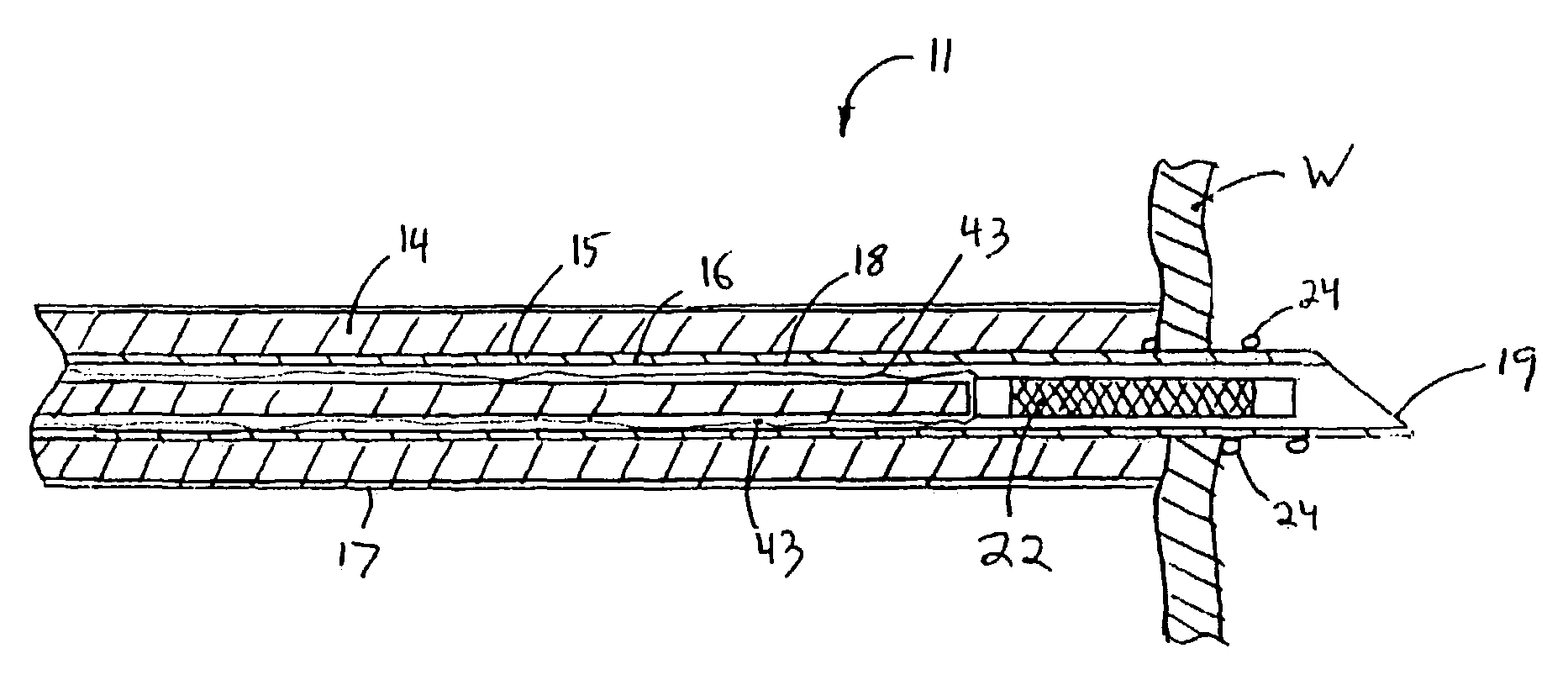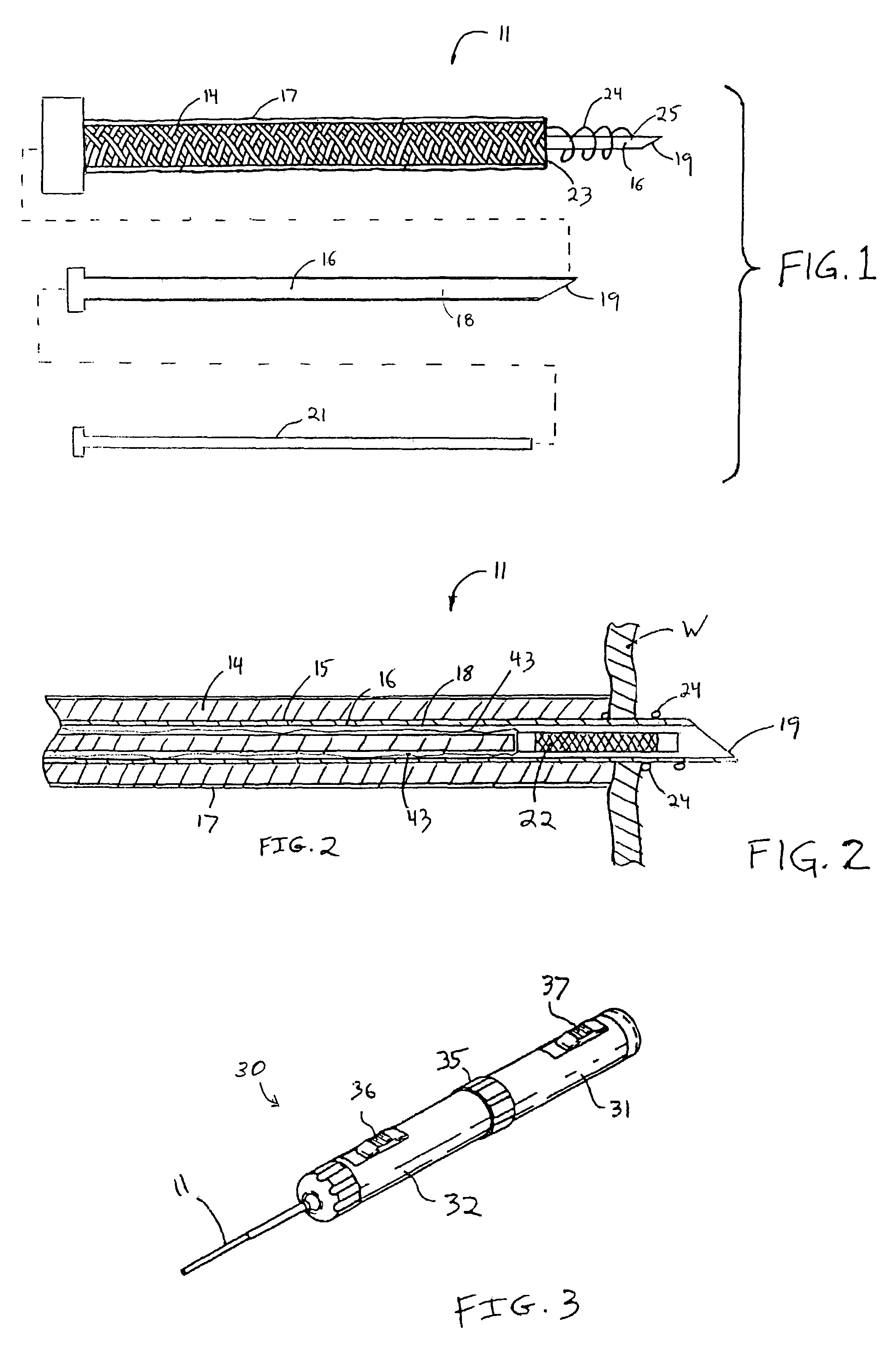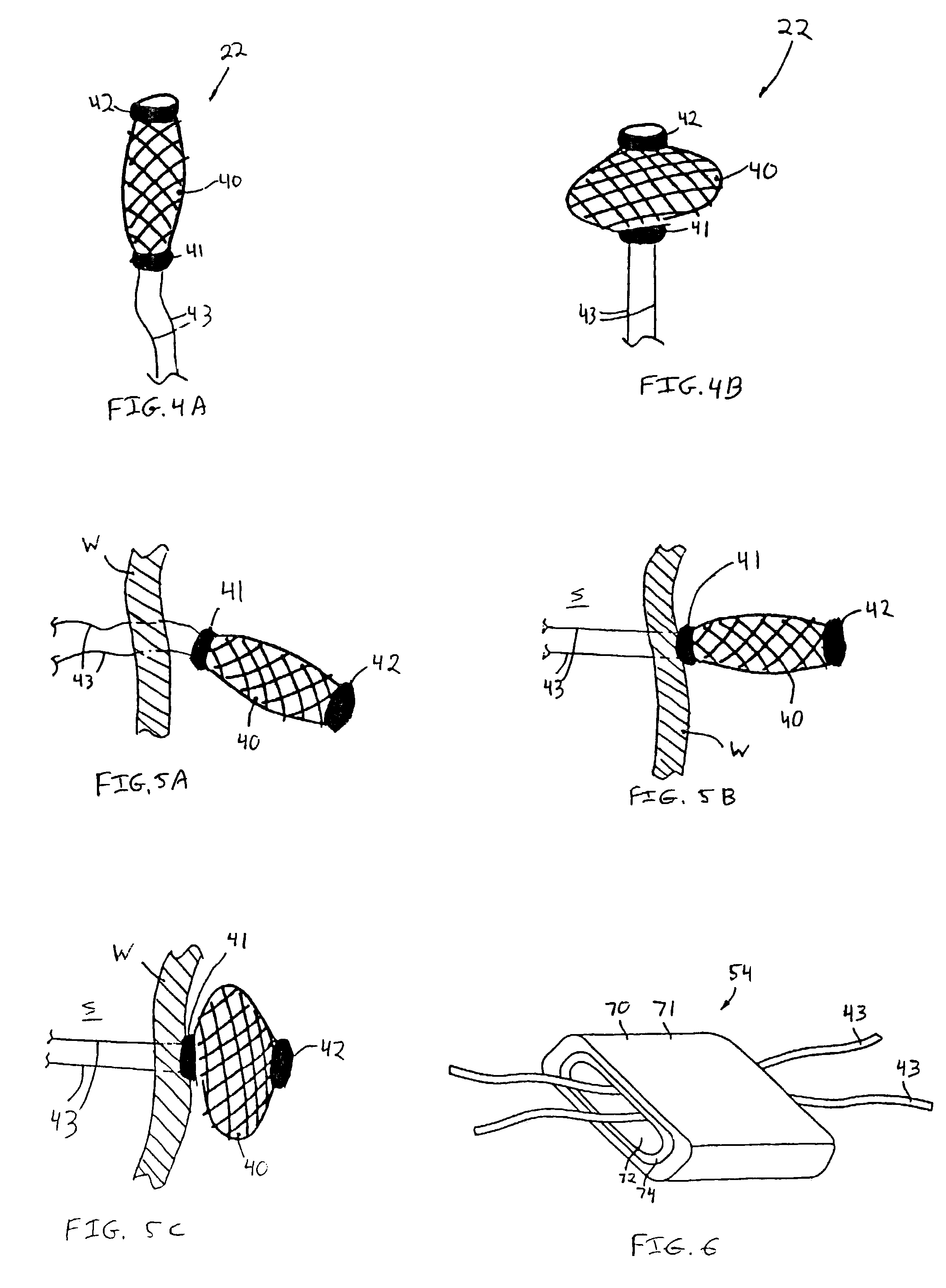Methods for reduction of a gastric lumen
a gastric lumen and gastric lumen technology, applied in the field of gastric lumen reduction methods, can solve the problems of electrolytic imbalance, difficulty in morbid procedures, and insufficient length of standard laparoscopic trocars, and achieve the effect of reducing the cross-sectional area of a gastrointestinal lumen
- Summary
- Abstract
- Description
- Claims
- Application Information
AI Technical Summary
Benefits of technology
Problems solved by technology
Method used
Image
Examples
Embodiment Construction
Overview of a Preferred Gastric Reduction System
[0035]Referring to FIGS. 1-7, illustrative components of gastric reduction apparatus 10 in accordance with the principles of the present invention are described. As explained in detail hereinafter, apparatus 10 enables a clinician to treat obesity by approximating the walls of a gastro-intestinal lumen to narrow the lumen, thus reducing the area for absorption in the stomach or intestines. Gastric reduction system 10 comprises anchor delivery catheter 11, anchor 22, and optionally, suture tensioning assembly 50. The structure and operation of each of these components are described separately below.
A. Delivery Catheter
[0036]Referring now to FIGS. 1 and 2, an illustrative embodiment of delivery catheter 11 constructed in accordance with the principles of the present invention is described. Delivery catheter 11 comprises elongate torqueable tube 14 having lumen 15 and needle 16 disposed for translation within lumen 15. Torqueable tube 14 ...
PUM
 Login to View More
Login to View More Abstract
Description
Claims
Application Information
 Login to View More
Login to View More - R&D Engineer
- R&D Manager
- IP Professional
- Industry Leading Data Capabilities
- Powerful AI technology
- Patent DNA Extraction
Browse by: Latest US Patents, China's latest patents, Technical Efficacy Thesaurus, Application Domain, Technology Topic, Popular Technical Reports.
© 2024 PatSnap. All rights reserved.Legal|Privacy policy|Modern Slavery Act Transparency Statement|Sitemap|About US| Contact US: help@patsnap.com










